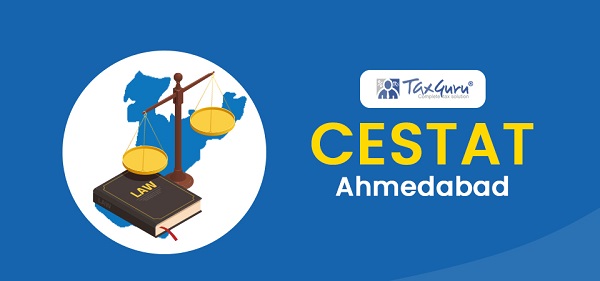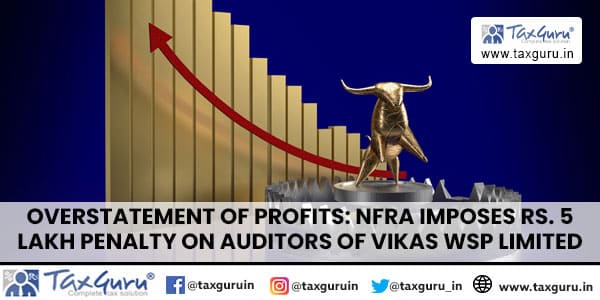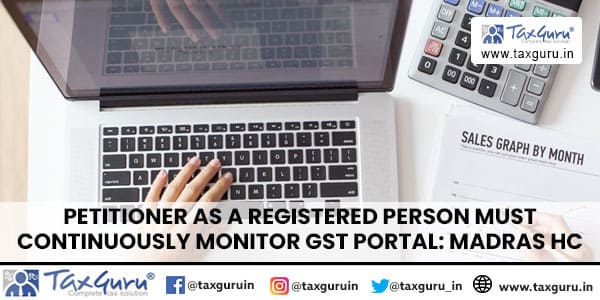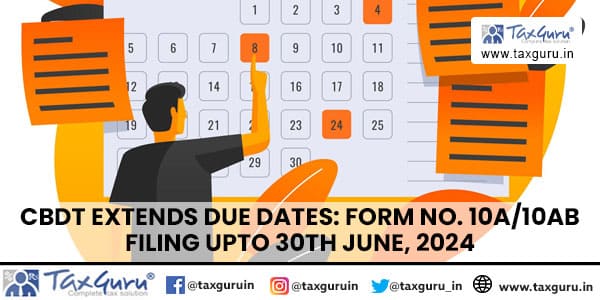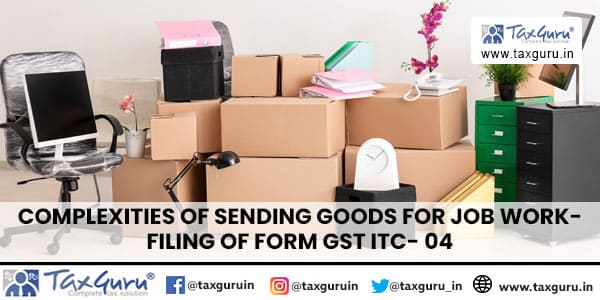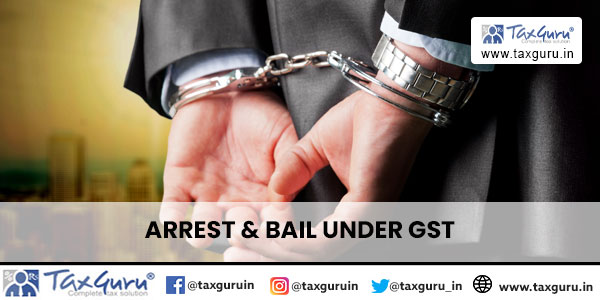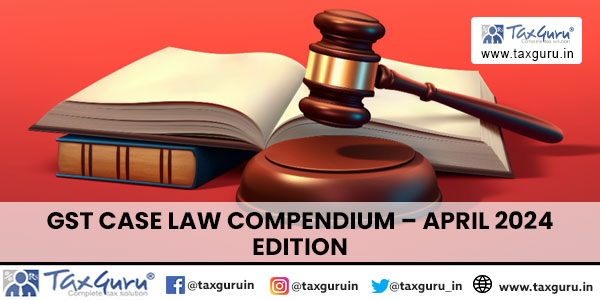Case Law Details
M/S Atv Projects (India) Ltd Vs. Union Of India & Ors. (Delhi High Court)
Under the newly enacted Section 4(b) there are only two classes of persons, namely (i) those persons in whose cases schemes were sanctioned and (ii) those persons in whose cases the schemes were pending. In the former, there are two sub-classes namely;
– schemes which were required to be implemented, where the NCLT could be approached and
– schemes where appeals were yet to be filed by the party aggrieved, where the NCLAT could be approached.
In the latter class of cases, there is only one remedy i.e. to approach the NCLAT within a period of 90 days. To this, there could be no quarrel. The broad classification of cases where schemes are sanctioned and not sanctioned is intelligible as both would be governed by the Code including the implementation, supervision and appeals arising therefrom. Thus, there is no discrimination whatsoever.
The second proposition that the Petitioner has a ‘legitimate expectation’ does not have any legal basis, inasmuch as the right of the Petitioner to approach the appropriate forum has not been taken away. The Petitioner was provided with the remedy to approach the NCLT within a period of 180 days. In law, there could not be a legitimate expectation to be governed by the repealed enactment when the manifest intention of the Legislature is to completely replace the said enactment with a new insolvency regime. By operation of law, the forum which the Petitioner can approach has been changed and a remedy was thus available to the Petitioner. On a query as to why the Petitioner chose not to approach the NCLT, the response was that the Petitioner wanted to be governed by the repealed Act, i.e., SICA and not in accordance with the Code as provided for under Section 4(b). Such a submission lacks any legal basis and is liable to be rejected.
Insofar as Twenty First Century Steels (supra) is concerned, the same is an order recording the submissions of the parties and neither party has placed before us any document to show that any new remedy not contemplated under the Code was in fact provided to the Petitioner therein. In the absence of the same, the said order does not assist the Petitioner in any manner.
In these circumstances, the validity of Section 4(b) is upheld and the writ petition is dismissed.
FULL TEXT OF THE HIGH COURT JUDGMENT / ORDER IS AS FOLLOWS:-
The petitioner ATV Projects (India) Pvt. Ltd. has filed the present writ petition challenging the constitutional validity of Section 4(b) of the Sick Industrial Companies (Special Provisions) Repeal Act, 2003 (hereinafter ‘Repeal Act’).
2. This Court had the occasion to deal with a similar challenge to various provisions of the Insolvency and Bankruptcy Code, 2016 (hereinafter ‘the Code’) as also Sections 4(b) and 5(1)(d) of the Repeal Act in P.(C) No. 9674/201 7, Ashapura Minechem Ltd. v. Union of India and Ors (hereinafter ‘Ashapura ’). Vide order dated 1st November, 2017, the challenge to Section 4(b) of the Repeal Act has been rejected by this Court in Ashapura (supra).
3. The findings in the said judgment are equally applicable to the present petition and it is held accordingly.
4. In addition Mr. Ramji Srinivasan, learned Senior Counsel for the petitioner has urged some further submissions which are being dealt with in the present order.
Brief Background
5. The petitioner claims to be a leading turnkey projects executing company, manufacturing a full range of industrial equipment for sugar and other industries. It ran a highly profitable business till 1994-95, when it suffered severe losses due to various
6. The petitioner filed a reference with the Board for Industrial & Financial Reconstruction (hereinafter ‘BIFR’) in 1998 and was declared a ‘sick company’ on 21stApril, 1999. IDBI was appointed as the operating agency for the purposes of formulating the scheme.
7. According to the petitioner, it has settled and paid the restructured amounts of all of its 28 secured lenders, and had obtained no dues certificate from 27 secured lenders. A Draft Rehabilitation Scheme (hereinafter ‘DRS’) was also circulated by BIFR on 14thSeptember, 2015. The DRS was pending before the BIFR, due to objections from the income tax authorities and some other authorities. On 30th November, 2016 all objections by other authorities were resolved by the BIFR. However, due to the reasons recorded in the BIFR’s order dated 30th November, 2016, some further directions were issued and the scheme was not sanctioned.
8. With effect from 1st December, 2017, i.e., one day later, the Repeal Act was enforced, vide Notification dated 25thNovember, Due to the said notification, proceedings before the BIFR stood abated and the petitioner could only approach the National Company Law Tribunal (hereinafter ‘NCLT’) within a period of 180 days.
Background of Insolvency and Bankruptcy Code, 2016
9. The Code was enacted in 2016 as Act 31 of 2016 and received Presidential assent on 28thMay, 2016. The Repeal Act, 2003 had enacted Sections 4(b) and 5(1)(d). Though the Act was enacted, it was not notified till 25th November, 2016. Thereafter, with the incorporation of Section 4(b) as part of the Eighth Schedule of the Code and notification of the same with effect from 1st November 2016, the amended Section 4(b) of the Repeal Act came into operation with effect from 1st December 2016.
10. Section 4(b) was originally enacted with two provisos and thereafter, vide notification dated 24th May, 2017, two further provisos were added to Section 4(b). Section 4(b) and the notification titled the ‘Removal of Difficulty Order, 2017 (hereinafter `RDO 2017′) are extracted herein below:
“AFTER AMENDMENT OF SICA (REPEAL) A CT, 2003, W.E.F. 1ST NOVEMBER, 2016:
Consequential provisions – On the dissolution of the Appellate Authority and the Board –
(a) XXXX
(b) on such date as my be notified by the Central Government in this behalf, any appeal preferred to the Appellate Authority or any reference made or inquiry pending to or before the Board or any proceeding of whatever nature pending before the Appellate Authority or the Board under Sick Industrial Companies (special provisions) Act, 1985 (1 of 1986) shall stand abated:
Provided that a company in respect of which such appeal or reference or inquiry stands abated under this clause may make reference to the National Company Law Tribunal under the Insolvency and Bankruptcy Code, 2016 within one hundred and eighty days from the commencement of the Insolvency and Bankruptcy Code, 2016 in accordance with the provisions of the Insolvency and Bankruptcy Code, 2016.
Provided further that no fees shall be payable for making such reference under Insolvency and Bankruptcy Code, 2016 by a company whose appeal or reference or inquiry stands abated under this clause]”
THE REMOVAL OF DIFFICULTY ORDER, 2017:
S.O. 1683(E).- Whereas, the Insolvency and Bankruptcy Code, 2016 (31 of 2016 (hereinafter referred to as the said Code) received the assent of the President on 28th May, 2016 and was published in the official Gazette on the same date;
And, whereas, section 252 of the said Code amended the Sick Industrial Companies (Special Provisions) Repeal Act, 2003 (1 of 2004) in the manner specified in the Eighth Schedule to the said Code;
And, whereas, the un-amended second proviso to clause (b) of section 4 of the Sick Industrial Companies (Special Provisions) Repeal Act, 2003 provides that any scheme sanctioned under sub-section (4) or any scheme under implementation under sub-section (12) of section 18 of the repealed enactment i.e., the Sick Industrial Companies (Special Provisions) Act, 1985 (1 of 1986) shall be deemed to be a scheme under implementation under section 424D of the Companies Act, 1956, (1 of 1956) and shall be dealt with in accordance with the provisions contained in Part VIA of the Companies Act, 1956;
And, whereas, section 424D of the Companies Act, 1956 provided for review or monitoring of schemes that are sanctioned or are under implementation;
And, whereas the Companies Act, 1956 has been repealed are re-enacted as the Companies Act, 2013 (18 of 2013) which, inter alia, provides for scheme of revival and rehabilitation, sanction of scheme, scheme to be binding and for the implementation of scheme under section 261 to 264 of the Companies Act, 2013;
And, whereas, sections 253 to 269 of the Companies Act, 2013 have been omitted by Eleventh Schedule to the Insolvency and Bankruptcy Code, 2016;
And, whereas, clause (b) of section 4 of the Sick Industrial Companies (Special Provisions) Repeal Act, 2003 has been substituted by the Eighth Schedule to the Code, which provides that any appeal preferred to the Appellate Authority or any reference made or inquiry pending to or before the Board or any proceeding of whatever nature pending before the Appellate Authority or the Board under the Sick Industrial Companies (Special Provisions) Act, 1985 shall stand abated. Further, it was provided that a company in respect of which such appeal or reference or inquiry stands abated under this clause may make a reference to the NCLT under the Code within one hundred and eighty days from the date of commencement of the Code;
And, whereas, difficulties have arisen regarding review or monitoring of the schemes sanctioned under sub-section (4) or any scheme under implementation under sub-section (12) of section 18 of the Sick Industrial Companies (Special Provisions) Act, 1985 (1 of 1986) in view of the repeal of the Sick Industrial Companies (Special Provisions) Repeal Act, 2003 and omission of sections 253 to 269 of the Companies Act, 2013;
Now, therefore, in exercise of the powers conferred by the sub-section (1) of the section 242 of the insolvency and Bankruptcy Code, 2016 (31 of 2016), the Central Government hereby makes the following Order to remove the above said difficulties, namely:-
1. Short title and commencement.– (1) This Order may be called the Insolvency and Bankruptcy Code (Removal of Difficulties) Order, 2017.
2. In the Insolvency and Bankruptcy Code, 2016, in the Eighth Schedule, relating to amendment to the Sick Industrial Companies (Special Provisions) Repeal Act, 2003, in section 4, in clause (b), after the second proviso, the following provisos shall be inserted, namely:-
“Provided also that any scheme sanctioned under sub-section (4) or any scheme under implementation under sub-section (12) of section 18 of the Sick Industrial Companies (Special Provisions) Act, 1985 shall be deemed to be an approved resolution plan under sub-section (1) of section 31 of the Insolvency and Bankruptcy Code, 2016 and the same shall be dealt with, in accordance with the provisions of Part II of the said code:
Provided also that in case, the statutory period within which an appeal was allowed under the Sick Industrial Companies (Special Provisions) Act, 1985 against an order of the Board had not expired as on the date of notification of this Act, an appeal against any such deemed approved resolution plan may be preferred by any person before National Company Law Appellate Tribunal within ninety days from the date of publication of this order.”
Thus, section 4(b), as it finally stands today has four provisos.
Petitioner’s submissions
11. The grievance of the petitioner is that its scheme, which was pending before BIFR, was at a very advanced stage and was almost on the verge of acceptance, a day prior to the notification of the Repeal Act. The petitioner had taken several steps throughout the lengthy process and had under gone several rounds of proceedings before the BIFR and the Appellate Authority for Industrial & Financial Reconstruction (AAIFR), as also in writ petitions, prior to the matter reaching the final stage for approval of the scheme. However, unfortunately, on 30th November, 2016 the scheme was not approved by BIFR, which resulted in the scheme remaining pending and hence abating upon notification of the Repeal Act.
12. The petitioner vehemently urges that the abatement of proceedings, as the scheme was not sanctioned, would result in severe injustice to the petitioner. The petitioner further urges that its scheme should not be treated as being different from those cases where the schemes were sanctioned or appeals were pending. In any event, the petitioner urges that it had a right to challenge the order dated 30th November, 2016 of the BIFR, by way of an appeal, and that right could not have been taken away. According to the petitioner, the right to appeal is a vested right and would be governed by the law prevalent on the date when the right accrued, in this case i.e., on 30thNovember, 2016. The petitioner, thus, urges that Section 4(b) is illegal and unconstitutional and violative of Articles 14 & 19 of the Constitution of India.
13. The petitioner further urges that the classification between cases where schemes were pending and schemes that were sanctioned is not based on any intelligible differentia and does not satisfy the object sought to be achieved.
14. The petitioner also places reliance upon an order dated 12th September, 2017 passed by a co-ordinate Bench of this Court in W.P. (C) 1621/2017, Twenty First Century Steels Limited v. Union of India (hereinafter ‘Twenty First Century Steels’) to submit that in the said case the Government had issued an office memorandum dated 9th August, 2017 to give benefit to such persons whose appeals were pending before the AAIFR. Thus, according to the petitioner a similar remedy should be made available to it.
Findings in Ashapura Mine chem Ltd. v. Union of India and Ors
15. This Court, in Ashapura (supra), has held that the object with which the Code was enacted was to completely reform the existing insolvency regime. The Code has been enacted to replace It is the clear and categorical intention of the Legislature under Section 4(b) that all proceedings under SICA pending before the AAIFR or BIFR as on 1st December, 2016 would abate. This principle was applied uniformly without any exceptions. Section 5(1)(d) only provides an exception to such class of cases where the BIFR had already passed an order for sanctioning the scheme. Thus, schemes which were sanctioned prior to 1st December, 2016 would be protected. The saving clause thus only applies to schemes already sanctioned by the BIFR and none else. All other persons whose proceedings were still pending could only avail of the remedy of approaching the NCLT under the Code.
16. In Ashapura (supra), this Court has also held that the differentiation between sick companies where draft schemes have been approved, which are treated as `deemed approved resolution plans’ under the Code, and such cases where draft schemes have not been approved, and are thus fully covered by the Code, does not fall foul of Article 14. This Court has further held that sick companies whose schemes have been sanctioned form a separate and distinct class and the differentiation made is a valid, germane and realistic classification. It has been further held in Ashapura (supra) that the fixing of the cut-off date as 1st December, 2016 cannot be held to be arbitrary, inasmuch as, for a legislation of this nature there would be a cut-off date and the date on which Eighth Schedule is incorporated into the Code is a valid cut-off date. Whenever a legislation is either repealed or a new enactment is brought into place, a cut-off date has to be prescribed. The mere fixing of the cut-off date does not make the same illegal or arbitrary. While reiterating the findings in Ashapura (supra), we examine the additional submissions made by the Petitioner in the present case.
Analysis and Findings
17. The main plank of the Petitioner’s submissions is that the right to appeal is a vested right and cannot be taken away. The Petitioner relies on the following authorities to buttress its case.
1. Hoosein Kasam Dada (India) Ltd. v. State of M.P., 1953 SCR 987 (hereinafter ‘Hoosein Kasam Dada’)
2. Garikapati Veeraya v. N. Subbiah Choudhry, 1957 SCR 488 (hereinafter ‘Garikapati Veeraya ’)
3. Shiv Shakti Coop. Housing Society v. Swaraj Developers, (2003) 6 SCC 659 (hereinafter ‘Shiv Shakti Coop. Housing Society’)
18. The case law cited by the Petitioner provide the answer to the question raised. In Hoosein Kasam Dada (supra), the Supreme Court was dealing with a case where the Central Provinces and Berar Sales Tax Act, 1947 was amended to the effect that unless the payment of the tax determined in the assessment was made, no appeal would be entertained. This was in contradiction to the earlier provisions, wherein the appellant could admit to what was due and pay only that part of the amount. Thus, by the amendment, the condition of compulsory pre- deposit of the entire amount was imposed which was not a requirement as per the earlier provision. The Supreme Court, in the said context held that the appellant cannot be burdened with higher pre- deposit conditions and that the provision of appeal which applies is the one which was in existence on the date when the proceedings were initiated and not the date when the appeal was filed. Moreover, in the said case, the amendment did not expressly or by implication intend for the new amended provision to apply to all new appeals arising from pending cases. But even in the said judgment, the Supreme Court clearly relies upon the observations of the Privy Council that a legislation cannot be held to act retrospectively, unless a clear intention to this effect is manifested. The Supreme Court holds as under:-
“Such a vested right cannot be taken away except by express enactment or necessary intendment. An intention to interfere with or to impair or imperil such a vested right cannot be presumed unless such intention be clearly manifested by express words or necessary implication.”
(emphasis supplied)
Thus, if there is a manifest intention in the legislation, the same would have to be given effect to.
19. Similar is the view expressed in Nogendra Nath Bose v. Mon Mohan Singha Roy AIR 1931 Cal 100, which also held that a right to appeal cannot be taken away in the absence of a express Moreover, as held in British Bank of India Vs. CIT [2004] (1) Mh.L.J.297, there is no inherent right of appeal and it has to be specifically conferred by the statute.
20. A Constitution Bench of the Supreme Court in Garikapati Veeraya (supra) summarized the legal position as under:-
“From the decisions cited above the following principles clearly emerge:
(i) That the legal pursuit of a remedy, suit, appeal and second appeal are really but steps in a series of proceedings all connected by an intrinsic unity and are to be regarded as one legal proceeding.
(ii) The right of appeal is not a mere matter of procedure but is a substantive right.
(iii) The institution of the suit carries with it the implication that all rights of appeal then in force are preserved to the parties there to till the rest of the carrier of the suit.
(iv) The right of appeal is a vested right and such a right to enter the superior Court accrues to the litigant and exists as on and from the date the lis commences and although it may be actually exercised when the adverse judgment is pronounced such right is to be governed by the law prevailing at the date of the institution of the suit of proceeding and not by the law that prevails at the date of its decision or at the date of the filing of the appeal.
(v) This vested right of appeal can be taken away only by a subsequent enactment, if it so provides expressly or by necessary intendment and not otherwise.”
(Emphasis supplied)
21. Thus, the clear ratio of all these decisions is that if there is a manifest intention, either by express words or necessary implication, the right of appeal can be taken away and the right does not remain. The right to appeal is a statutory right and can be expressly or impliedly taken away. These decisions do not hold that if proceedings are pending, a vested right exists. In this case, we are not concerned with the right or pendency of an appeal, but repeal of an enactment and its substitution by another, with the express stipulation that proceedings under the repealed enactment would abate.
22. The Repeal Act and Code expressly and specifically state that the proceedings under SICA would not survive and would This is the explicit provision incorporated by means of the amendment to Section 4(b). The legislature clearly provides a remedy to all persons/ classes of persons whose proceedings were pending and it is up to them to avail the same in accordance with the prevalent law. In the instant case, a perusal of the Code and the Repeal Act clearly shows that there is one broad classification which has been made by the Legislature, namely cases in which schemes are sanctioned and those cases in which the schemes or proceedings are still pending. In the latter class of cases, the legislature provides the remedy of approaching the NCLT within a period of 180 days from the date when the Code comes into effect. Such proceedings would then be dealt with “in accordance with the provisions of Insolvency and Bankruptcy Act, 2016.”
23. During the course of submissions, Mr. Srinivasan repeatedly urged that the petitioner’s case, having been dealt with in accordance with the SICA and having reached an extremely advanced stage, to relegate it to the NCLT, to be treated in accordance with the Code, results in severe injustice. The legal position on this issue has been settled by the Supreme Court in State of Rajasthan Vs. Mangilal Pindwal AIR 1996 SC 2181 wherein the Court quoted with approval the following passage on `Craies on Statute Law’
““When an Act of Parliament is repealed,” said Lord Tenterden in Surtees v. Ellison,” it must be considered (except as to transactions past and closed) as if it had never existed. That is the general rule.” Tindal C.J. stated the exception more widely. He said: “The effect of repealing a statute is to obliterate it as completely from the records of the Parliament as if it had never been passed; and it must be considered as a law that never existed except for the purpose of those actions which were commenced, prosecuted and concluded whilst it was an existing law.”
It is the clear view of this Court that once a law is repealed and a new legislation has been put in its place, it is not open for anyone to contend that it should be continued to be governed by the old enactment, except where actions under the existing laws had concluded. The applicability of the repealed legislation is only to the extent as provided in the Savings clause and nothing more.
24. Mr. Srinivasan further urged that several exceptions have been created in favour of parties whose schemes have been sanctioned, parties who could have preferred appeals against an approved scheme (deemed approved resolution plan) and thus, creation of an exception for cases like that of the Petitioner would not be irregular or improper. In fact, as per the Petitioner, creation of such exceptions itself, proves that the abatement is not cast in stone.
25. Though at first blush this submission of the Petitioner may sound appealing, a deeper examination would reveal that even the 4th proviso of Section 4(b) does not create a new class. In fact it deals with cases where schemes have been sanctioned and appeals contesting the sanction have not been filed. It is only those cases where schemes have been sanctioned and appeals have not yet been filed that a party can approach the NCLAT. The reasons are not far to seek, inasmuch as the 3rd and 4th proviso read together make it evident that a scheme sanctioned by the BIFR, or under the implementation by the BIFR would be an `approved resolution plan’ under Section 31(1) of the Code. It is only when a party who is aggrieved by the said resolution plan, whose time limit for filing the appeal had not expired, that can approach the NCLAT.
26. Thus, under the newly enacted Section 4(b) there are only two classes of persons, namely (i) those persons in whose cases schemes were sanctioned and (ii) those persons in whose cases the schemes were pending. In the former, there are two sub-classes namely;
– schemes which were required to be implemented, where the NCLT could be approached and
– schemes where appeals were yet to be filed by the party aggrieved, where the NCLAT could be approached.
In the latter class of cases, there is only one remedy i.e. to approach the NCLAT within a period of 90 days. To this, there could be no quarrel. The broad classification of cases where schemes are sanctioned and not sanctioned is intelligible as both would be governed by the Code including the implementation, supervision and appeals arising therefrom. Thus, there is no discrimination whatsoever.
27. The second proposition that the Petitioner has a ‘legitimate expectation’ does not have any legal basis, inasmuch as the right of the Petitioner to approach the appropriate forum has not been taken away. The Petitioner was provided with the remedy to approach the NCLT within a period of 180 days. In law, there could not be a legitimate expectation to be governed by the repealed enactment when the manifest intention of the Legislature is to completely replace the said enactment with a new insolvency regime. By operation of law, the forum which the Petitioner can approach has been changed and a remedy was thus available to the Petitioner. On a query as to why the Petitioner chose not to approach the NCLT, the response was that the Petitioner wanted to be governed by the repealed Act, i.e., SICA and not in accordance with the Code as provided for under Section 4(b). Such a submission lacks any legal basis and is liable to be rejected.
28. Insofar as Twenty First Century Steels (supra) is concerned, the same is an order recording the submissions of the parties and neither party has placed before us any document to show that any new remedy not contemplated under the Code was in fact provided to the Petitioner therein. In the absence of the same, the said order does not assist the Petitioner in any manner.
29. In these circumstances, the validity of Section 4(b) is upheld and the writ petition is dismissed. Like in Ashapura (supra), this Court holds that the Petitioner, if it is so advised, may avail of the remedy provided under the Code. As the time period of 180 days has already lapsed, if the Petitioner approaches the NCLT, the request for condonation of delay, if any, be considered if permissible in law.
30. The writ petition is dismissed with no order as to costs.






